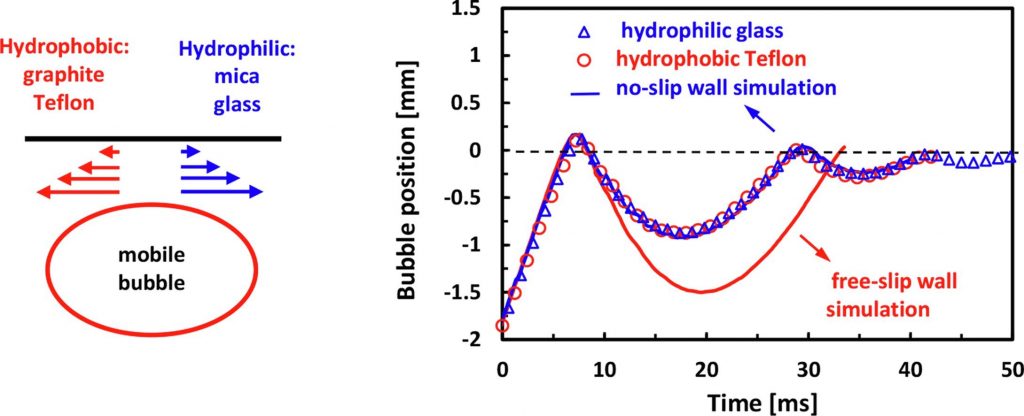Bouncing bubbles do not show water slip on smooth hydrophobic surfaces

Hypothesis: The presence of hydrodynamic slip of water on smooth hydrophobic surfaces has been debated
intensely over the last decades. In recent experiments, the stronger bounce of free-rising bubbles from smooth
hydrophobic surfaces compared to smooth hydrophilic surfaces was interpreted as evidence for a significant
water slip on smooth hydrophobic surfaces.
Experiments: To examine the possible water-slip effect, we conduct well-controlled experiments comparing the
bouncing dynamics of millimeter-sized free-rising bubbles from smooth hydrophobic and hydrophilic surfaces.
The hydrophobic surfaces were graphite or Teflon, and the hydrophilic surfaces were glass or mica. To avoid
contamination, the experiments were conducted in pure water without any surface-active additives. Numerical
simulations were also used to compare the bounce of the bubble from a no-slip and free-slip walls.
Finding: Our experiments show that the free-rising bubbles in pure water bounce identically from the smooth
hydrophobic graphite or Teflon surfaces as from smooth hydrophilic mica or glass surfaces. The bubble bounce
from all four surfaces is in excellent agreement with the numerical simulation of a bubble bouncing from a flat,
no-slip wall. At the same time, numerical simulations for bubbles bouncing from a free-slip wall predict up to
two-fold stronger bouncing amplitudes. Our experiments and numerical simulations, including estimates of the
shear rates, confirm the no-slip boundary condition for water on smooth hydrophobic surfaces.

